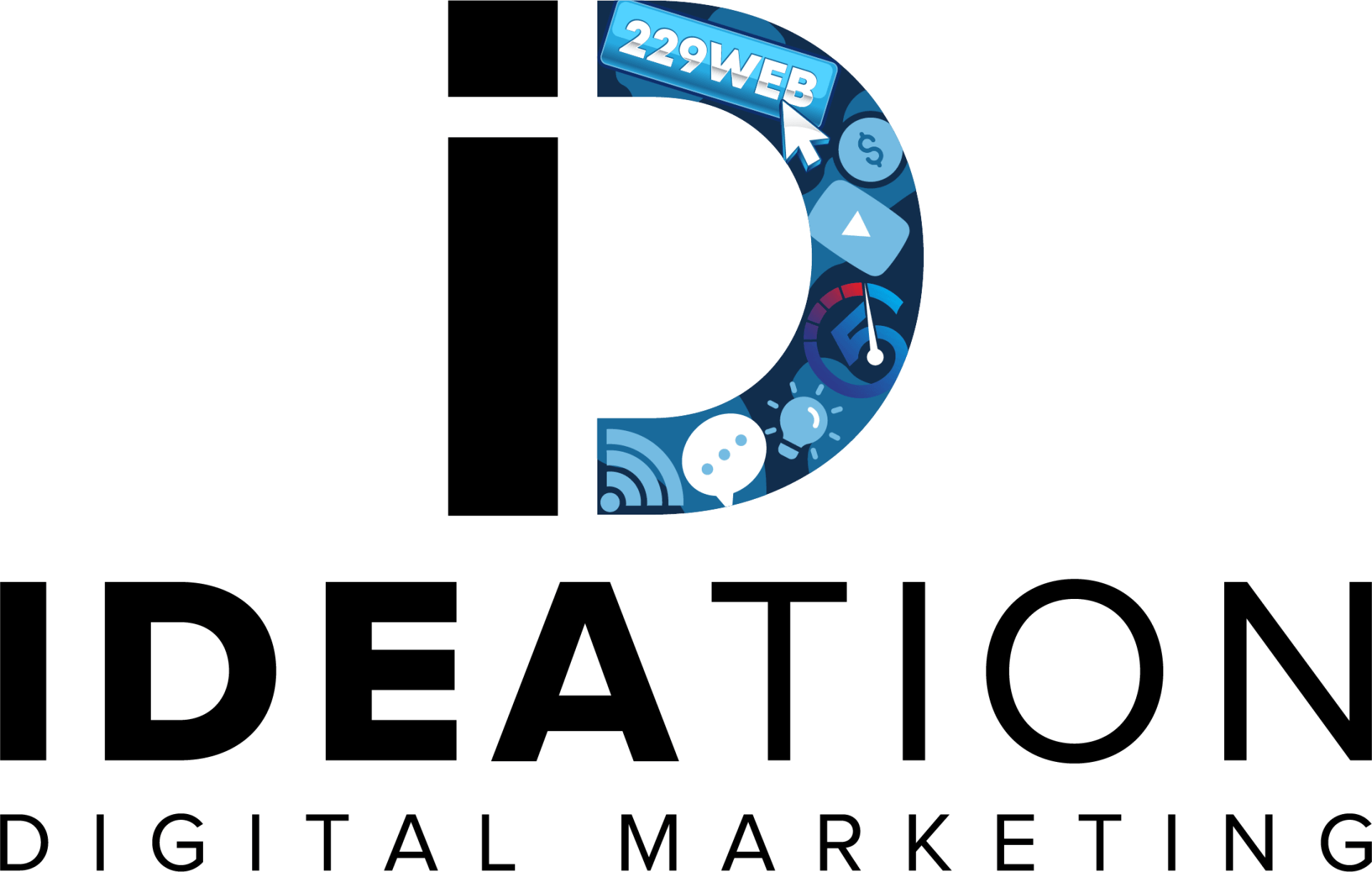How to Use Customer Feedback Tools for Effective Product Improvement

In today's competitive business landscape, understanding and acting on customer feedback isn't just good practice—it's essential for survival and growth. Products that evolve based on customer insights consistently outperform those developed in isolation from user experiences. However, collecting, analyzing, and implementing customer feedback effectively requires the right tools and methodologies.
This comprehensive guide explores how businesses can leverage customer feedback tools to drive meaningful product improvements. From selecting the right feedback collection platforms to implementing closed-loop feedback systems, we'll cover everything you need to know to transform customer insights into tangible product enhancements that boost customer satisfaction and retention.
What Are the Best Customer Feedback Tools for Product Improvement?
The market offers numerous customer feedback tools, each with unique strengths. Selecting the right ones depends on your specific product, customer base, and business objectives.
Which Feedback Collection Methods Deliver the Most Actionable Insights?
Different feedback collection methods yield different types of insights, each valuable for specific aspects of product improvement:
1. In-App Surveys and Feedback Widgets
•Strengths: Capture feedback in context while users interact with your product
•Best for: Understanding specific feature usability and identifying pain points
•Example tools: Intercom, UserVoice, Hotjar
•Actionability: High—directly tied to specific product experiences and user journey touchpoints
2. Email Surveys
•Strengths: Reach users outside the product experience, including churned customers
•Best for: Comprehensive product satisfaction assessment and competitive analysis
•Example tools: SurveyMonkey, Typeform, Google Forms
•Actionability: Medium to high—provides broader context but may lack specificity
•Advantage: Can include personalization elements to increase response rates
3. Customer Interviews and Focus Groups
•Strengths: Provide deep, qualitative insights and allow for follow-up questions
•Best for: Understanding underlying motivations and exploring new feature concepts
•Example tools: Zoom, UserTesting, dscout
•Actionability: Very high—rich context but requires synthesis and pattern recognition
•Value: Builds stronger customer relationships through direct engagement
4. Social Media Monitoring
•Strengths: Captures unsolicited, authentic feedback at scale
•Best for: Identifying trending issues and competitive comparisons
•Example tools: Brandwatch, Mention, Hootsuite
•Actionability: Medium—requires filtering and context but reveals unfiltered opinions
•Benefit: Provides insights into brand reputation and community sentiment
5. Customer Support Interactions
•Strengths: Highlights critical pain points driving customers to seek help
•Best for: Identifying bugs, usability issues, and feature gaps
•Example tools: Zendesk, Intercom, Freshdesk
•Actionability: High—directly tied to issues affecting customer experience
•Integration potential: Can connect with CRM systems for comprehensive customer profiles
The most effective approach typically combines multiple methods to create a comprehensive feedback ecosystem. For example, using in-app surveys for specific feature feedback while conducting quarterly email surveys for overall satisfaction measurement provides both tactical and strategic insights for your product roadmap.
How Do Multi-Channel Feedback Tools Enhance Product Development?
Multi-channel feedback tools consolidate insights from various touchpoints, providing several key advantages:
1. Comprehensive Customer Journey Mapping
•Capture feedback across the entire customer lifecycle
•Identify pain points at specific journey stages
•Connect pre-sales expectations with post-purchase experiences
•Create holistic view of customer experience across touchpoints
2. Diverse Demographic Reach
•Different customer segments prefer different communication channels
•Multi-channel approach ensures broader representation
•Prevents feedback bias toward tech-savvy or highly engaged users
•Captures insights from various audience segments and personas
3. Contextual Understanding
•Compare feedback across channels to validate findings
•Identify discrepancies between what customers say and do
•Develop more nuanced understanding of customer needs
•Build comprehensive knowledge base of customer insights
4. Increased Feedback Volume and Frequency
•More opportunities for customers to provide input
•Higher response rates through preferred channels
•Continuous rather than episodic feedback collection
•Creates robust dataset for analytics and trend identification
5. Holistic Data Integration
•Combine quantitative metrics with qualitative insights
•Link feedback to customer profiles and behaviors
•Create unified customer feedback database
•Enable advanced analytics and machine learning applications
Leading multi-channel feedback platforms like Qualtrics, GetFeedback, and Medallia excel at integrating data from various sources into unified dashboards, making it easier to identify patterns and prioritize product improvements based on comprehensive customer insights and feedback analytics.
What Features Should You Look for in Customer Feedback Software?
When evaluating customer feedback tools, consider these essential features:
1. Data Collection Capabilities
•Multiple feedback formats (surveys, ratings, open text)
•In-context triggering based on user behavior
•Customizable branding and question types
•Mobile-friendly and accessible design
•Omnichannel collection capabilities
2. Analysis and Reporting
•Sentiment analysis and text analytics
•Trend identification and visualization
•Segmentation capabilities
•Automated insights and recommendations
•Custom dashboard creation
3. Integration Capabilities
•Connects with your product (web, mobile, desktop)
•Integrates with CRM and customer support systems
•API availability for custom integrations
•Data export options
•Compatibility with business intelligence tools
4. Workflow Management
•Ticket creation from feedback items
•Assignment and tracking features
•Prioritization frameworks
•Closed-loop communication tools
•Task automation capabilities
5. Enterprise Readiness (for larger organizations)
•Role-based access controls
•Compliance with data protection regulations (GDPR)
•Single sign-on capabilities
•Enterprise-grade security
•Scalable infrastructure
6. User Experience
•Intuitive interface for both administrators and respondents
•Low friction for feedback providers
•Customizable dashboards
•Mobile administration capabilities
•Accessibility compliance
The ideal feedback tool should align with your organization's size, technical capabilities, and specific product improvement goals. Smaller teams might prioritize ease of use and quick implementation, while enterprise organizations may need robust security and extensive integration capabilities with existing software as a service (SaaS) platforms.
How Can You Analyze Customer Feedback to Drive Product Improvement?
Collecting feedback is only the first step—the real value comes from effective analysis and action.
What Are the Most Effective Feedback Analysis Techniques?
Transform raw feedback into actionable insights with these proven analysis methods:
1. Thematic Analysis
•Process: Categorize feedback into themes and subthemes
•Value: Identifies recurring patterns and major pain points
•Implementation: Use tagging systems or text analytics tools
•Example: Grouping all navigation-related comments to identify a confusing menu structure
•Benefit: Creates structured approach to qualitative data
2. Frequency and Impact Analysis
•Process: Measure how often issues appear and their effect on users
•Value: Helps prioritize improvements based on prevalence and severity
•Implementation: Create weighted scoring systems for feedback items
•Example: A rare but critical payment processing error vs. common but minor visual glitch
•ROI focus: Directs resources to highest-impact improvements
3. Sentiment Analysis
•Process: Evaluate emotional tone of feedback (positive, negative, neutral)
•Value: Gauges emotional impact of features or changes
•Implementation: Use NLP tools or manual coding for nuance
•Example: Detecting frustration in technically "neutral" feature requests
•Customer experience insight: Reveals emotional aspects of product usage
4. Longitudinal Analysis
•Process: Track feedback trends over time
•Value: Measures improvement progress and identifies emerging issues
•Implementation: Time-series dashboards with key feedback metrics
•Example: Monitoring sentiment improvement after a UI redesign
•Strategic value: Shows long-term impact of product decisions
5. Competitive Benchmarking
•Process: Compare your feedback against competitors
•Value: Identifies competitive advantages and gaps
•Implementation: Side-by-side analysis of similar features
•Example: Comparing your onboarding feedback to industry leaders
•Market positioning: Helps differentiate product offerings
6. Segmentation Analysis
•Process: Analyze feedback by user segments (new vs. power users, pricing tiers, etc.)
•Value: Reveals different needs across your user base
•Implementation: Cross-reference feedback with user metadata
•Example: Discovering feature priorities differ between enterprise and SMB customers
•Personalization opportunity: Enables targeted product improvements
The most sophisticated product teams combine multiple analysis techniques, often using dedicated feedback analysis platforms like ProductBoard, Dovetail, or UserVoice to manage the process at scale and generate actionable insights for their product roadmap.
How Does Sentiment Analysis Improve Understanding of Customer Needs?
Sentiment analysis goes beyond simple positive/negative categorization to provide deeper insights:
1. Emotional Context Detection
•Identifies frustration, delight, confusion, or satisfaction
•Reveals emotional impact of product experiences
•Helps prioritize issues causing negative emotions
•Uncovers opportunities to enhance customer loyalty
•Provides context for quantitative ratings
2. Intensity Measurement
•Distinguishes between mild annoyance and severe frustration
•Identifies passionate advocates vs. satisfied users
•Quantifies emotional response for tracking over time
•Helps allocate resources to most emotionally impactful issues
•Creates emotional impact scores for prioritization
3. Feature Sentiment Mapping
•Associates emotional responses with specific features
•Identifies which elements drive positive vs. negative experiences
•Helps preserve positive aspects during redesigns
•Creates feature-level sentiment scores
•Guides feature enhancement decisions
4. Hidden Problem Identification
•Detects issues users mention casually but don't explicitly flag
•Identifies subtle friction points through tone analysis
•Reveals underlying concerns beyond stated problems
•Uncovers potential churn risks before they escalate
•Provides early warning system for emerging issues
5. Cultural and Linguistic Nuance
•Accounts for different communication styles across cultures
•Identifies sarcasm and implied meaning
•Provides context for numerical ratings
•Improves global product adaptation
•Enhances international customer experience
Modern sentiment analysis tools use natural language processing (NLP) and machine learning to detect subtle emotional cues in text feedback. Advanced platforms like IBM Watson, Lexalytics, and MonkeyLearn can be integrated with feedback collection tools to provide automated sentiment scoring across large feedback volumes, creating a more comprehensive understanding of customer experience.
How to Prioritize Product Changes Based on Customer Feedback Data?
Not all feedback should carry equal weight in your product decisions. Effective prioritization frameworks include:
1. Impact vs. Effort Matrix
•Plot potential changes based on customer impact and implementation effort
•Prioritize high-impact, low-effort improvements for quick wins
•Schedule high-impact, high-effort items for major releases
•Consider low-impact, low-effort items for developer slack time
•Visualize prioritization decisions for stakeholder alignment
2. RICE Scoring (Reach, Impact, Confidence, Effort)
•Reach: How many users will this change affect?
•Impact: How much will it improve their experience?
•Confidence: How certain are we about our estimates?
•Effort: How much work is required?
•Calculate RICE score = (Reach × Impact × Confidence) ÷ Effort
•Creates objective framework for comparing disparate improvements
3. Kano Model Analysis
•Basic features: Must-have functionality users expect
•Performance features: The more you improve, the more satisfaction increases
•Excitement features: Unexpected features that drive delight
•Prioritize fixing broken basic features, then focus on performance and excitement features
•Balances maintenance with innovation
4. Customer Segment Weighting
•Assign different weights to feedback based on customer segments
•Consider factors like revenue contribution, strategic importance, growth potential
•Balance needs of current high-value customers vs. future growth segments
•Align product development with business strategy
•Supports customer lifetime value optimization
5. Strategic Alignment Filtering
•Evaluate feedback-driven improvements against strategic objectives
•Prioritize changes that align with product vision and company goals
•Consider market differentiation potential of various improvements
•Ensures product evolution supports business direction
•Maintains product coherence and focus
The most effective prioritization approaches combine quantitative scoring with qualitative judgment, ensuring that metrics inform but don't replace strategic thinking about product direction and customer experience enhancement.
What Are Proven Product Improvement Strategies Using Customer Feedback?
Translating feedback into tangible product improvements requires systematic approaches.
How to Implement Closed-Loop Feedback for Continuous Product Enhancement?
Closed-loop feedback systems ensure that customer input drives concrete improvements and customers know their feedback matters:
1. Establish the Feedback Collection Framework
•Deploy appropriate feedback tools across customer touchpoints
•Create consistent categorization and tagging systems
•Implement triggers based on customer behaviors and journey stages
•Design user-friendly feedback interfaces
•Ensure accessibility across devices and platforms
2. Create Analysis and Routing Workflows
•Develop processes for reviewing incoming feedback
•Route items to appropriate teams (product, engineering, support)
•Set response time expectations for different feedback types
•Implement automation for common feedback scenarios
•Create escalation paths for critical issues
3. Implement Action Planning Processes
•Create standard templates for feedback-driven improvement plans
•Establish decision criteria for different types of product changes
•Develop timelines for addressing different categories of feedback
•Define resource allocation methodology
•Create accountability for implementation
4. Close the Loop with Customers
•Acknowledge receipt of feedback promptly
•Provide updates when implementing suggested changes
•Explain decisions when feedback won't be implemented
•Invite further input on implemented changes
•Personalize communications when possible
5. Measure and Refine the System
•Track feedback volume, quality, and implementation rates
•Measure customer satisfaction with the feedback process itself
•Continuously improve feedback collection and implementation
•Monitor closed-loop completion metrics
•Calculate ROI of feedback-driven improvements
Companies like Slack excel at closed-loop feedback by acknowledging user suggestions, providing transparent product roadmaps influenced by feedback, and following up with users when their requested features launch, creating a strong sense of customer partnership and community engagement.
What Role Does Data-Driven Prioritization Play in Product Updates?
Data-driven prioritization transforms subjective opinions into objective decision-making:
1. Quantifying Customer Pain Points
•Measure frequency of specific issues in feedback
•Calculate impact scores based on severity and user numbers
•Create weighted priority scores across feedback sources
•Develop pain point heat maps
•Establish objective severity ratings
2. Correlating Feedback with Behavioral Data
•Link feedback themes to user retention and engagement metrics
•Identify issues that correlate with churn or reduced usage
•Quantify potential business impact of addressing specific feedback
•Connect qualitative feedback with quantitative analytics
•Create holistic view of customer experience
3. Forecasting Improvement ROI
•Estimate development costs for potential improvements
•Project impact on key business metrics (retention, engagement, conversion)
•Calculate expected return on investment for different improvements
•Model long-term value of addressing feedback
•Create business cases for major improvements
4. Balancing Quick Wins and Strategic Improvements
•Use data to identify high-impact, low-effort improvements
•Allocate resources between immediate fixes and long-term enhancements
•Create balanced roadmaps with measurable outcome targets
•Maintain momentum with regular visible improvements
•Build foundation for transformative changes
5. Testing and Validation
•Implement A/B testing to validate improvement hypotheses
•Measure actual impact against forecasted benefits
•Refine prioritization models based on results
•Create feedback loops for continuous optimization
•Build institutional knowledge about effective improvements
Tools like Amplitude, Mixpanel, and Pendo help product teams connect qualitative feedback with quantitative usage data, creating a more complete picture of improvement opportunities and their potential impact on customer satisfaction and business metrics.
How to Align Customer Feedback With Product Roadmap Planning?
Effective product teams integrate feedback into their roadmap planning process:
1. Feedback-Informed Theme Identification
•Group related feedback into strategic themes
•Identify patterns that suggest larger opportunities
•Use themes to structure roadmap categories
•Connect themes to business objectives
•Create coherent improvement narratives
2. Balanced Roadmap Construction
•Allocate roadmap space to different feedback categories
•Balance new features with improvements to existing functionality
•Include both visible improvements and technical debt reduction
•Maintain flexibility for emerging priorities
•Create transparent prioritization framework
3. Transparent Communication Frameworks
•Create systems for sharing roadmap decisions with customers
•Explain how feedback influenced prioritization
•Set appropriate expectations about implementation timelines
•Acknowledge contributions from customer feedback
•Build trust through transparency
4. Continuous Feedback Integration
•Establish regular cycles for reviewing new feedback
•Create mechanisms for adjusting roadmaps based on emerging trends
•Maintain flexibility to address critical issues
•Implement feedback review milestones
•Develop feedback-driven roadmap updates
5. Outcome-Based Measurement
•Define success metrics for feedback-driven improvements
•Track impact of implemented changes on customer satisfaction
•Use results to refine future roadmap planning
•Measure business outcomes of feedback implementation
•Create feedback effectiveness scorecards
Companies like Buffer demonstrate excellence in this area by maintaining public product roadmaps that clearly show how customer feedback influences their development priorities, creating transparency and building customer trust through visible responsiveness.
How Do You Collect Actionable Customer Feedback Effectively?
The quality of feedback you receive directly impacts the quality of your product improvements.
What Questions Generate the Most Useful Product Feedback?
Crafting effective questions is an art that significantly impacts feedback quality:
1. Feature-Specific Questions
•"What was your experience using [specific feature]?"
•"What would make [specific feature] more useful for you?"
•"How does [specific feature] compare to similar tools you've used?"
•"What challenges did you encounter when using [specific feature]?"
•"How well does [specific feature] integrate with your workflow?"
2. Problem-Oriented Questions
•"What tasks are most difficult to accomplish with our product?"
•"What workarounds have you created for limitations in our product?"
•"What slows you down when using our product?"
•"What frustrates you most about our product?"
•"What problems does our product not solve that you wish it would?"
3. Goal-Focused Questions
•"What are you trying to accomplish with our product?"
•"How well does our product help you achieve [specific goal]?"
•"What would help you achieve [specific goal] more effectively?"
•"What obstacles prevent you from reaching your goals with our product?"
•"How has our product changed your ability to accomplish [specific goal]?"
4. Context-Gathering Questions
•"In what situations do you typically use our product?"
•"What other tools do you use alongside our product?"
•"How does our product fit into your overall workflow?"
•"What environment or conditions affect your use of our product?"
•"How does your team collaborate using our product?"
5. Forward-Looking Questions
•"What capabilities would make our product more valuable to you?"
•"How do you expect your needs to change in the next year?"
•"If you could add one thing to our product, what would it be?"
•"What emerging challenges do you anticipate needing help with?"
•"How might our product better support your future goals?"
6. Quantitative Rating Questions
•"On a scale of 0-10, how likely are you to recommend our product?" (NPS)
•"How satisfied are you with [specific feature]?" (1-5 scale)
•"How important is [specific capability] to your work?" (1-5 scale)
•"How easy was it to accomplish [specific task]?" (Customer Effort Score)
•"How well does our product meet your expectations?" (1-5 scale)
The most effective feedback strategies combine these question types, often starting with quantitative ratings to identify areas of interest, then following up with qualitative questions to explore those areas more deeply and gather actionable insights for product improvement.
How to Encourage Honest and Detailed Customer Responses?
Getting customers to provide thorough, candid feedback requires deliberate approaches:
1. Create Psychological Safety
•Explicitly state that all feedback is welcome, including criticism
•Demonstrate receptiveness to negative feedback
•Separate feedback collection from sales or account management conversations
•Maintain confidentiality when appropriate
•Show appreciation for constructive criticism
2. Optimize Timing and Context
•Request feedback at relevant moments in the user journey
•Avoid interrupting critical tasks or workflows
•Consider the user's emotional state and experience level
•Time requests after significant interactions or milestones
•Respect user attention and time constraints
3. Demonstrate Value Exchange
•Explain how feedback will be used
•Share examples of previous improvements based on feedback
•Consider incentives for detailed feedback (early access, recognition)
•Show the impact of past feedback on product development
•Create visible feedback implementation stories
4. Design User-Friendly Feedback Mechanisms
•Keep initial feedback quick and simple
•Provide optional paths for more detailed input
•Support multiple feedback formats (text, audio, screenshots)
•Optimize for mobile and desktop experiences
•Minimize friction in the feedback process
5. Ask Follow-Up Questions
•Use branching logic to explore interesting responses
•Implement probing questions for vague feedback
•Create opportunities for clarification
•Personalize follow-up based on initial responses
•Use conversational approaches for deeper insights
6. Show Appreciation
•Thank users promptly for their feedback
•Acknowledge the specific value of their input
•Follow up with implementation updates when appropriate
•Recognize significant contributions
•Build ongoing feedback relationships
Companies like Airbnb excel at encouraging detailed feedback by making the process simple, showing how feedback improves the platform, and following up with users about changes made based on their input, creating a culture of continuous improvement and customer centricity.
What Are Best Practices for in-App and Survey Feedback Collection?
Maximize response rates and feedback quality with these implementation strategies:
In-App Feedback Best Practices:
1.Contextual Triggering
•Present feedback opportunities based on user actions
•Target specific features after sufficient usage
•Avoid interrupting critical workflows
•Time requests after task completion
•Consider user's familiarity with the product
2.Progressive Disclosure
•Start with simple questions (e.g., thumbs up/down)
•Provide optional paths for more detailed feedback
•Use branching logic based on initial responses
•Respect user time with clear expectations
•Allow users to control feedback depth
3.Visual Integration
•Design feedback elements to match your product's UI
•Use consistent positioning for feedback widgets
•Consider non-intrusive options like feedback tabs
•Maintain brand consistency in feedback interfaces
•Ensure accessibility compliance
4.Response Optimization
•Keep initial interactions under 15 seconds
•Use clear, action-oriented language
•Provide estimated completion time for longer surveys
•Optimize for mobile and desktop experiences
•Test different formats for maximum engagement
5.Technical Implementation
•Ensure feedback tools work across devices
•Test performance impact on your application
•Implement proper data handling and privacy controls
•Consider offline collection capabilities
•Maintain GDPR and privacy compliance
Survey Feedback Best Practices:
1.Survey Design
•Limit surveys to 5-7 minutes completion time
•Start with engaging, easy-to-answer questions
•Group related questions together
•End with open-ended questions for additional insights
•Use progress indicators for longer surveys
2.Distribution Strategy
•Segment recipients for relevant questions
•Optimize sending times based on user activity patterns
•Consider multi-channel distribution (email, in-app, SMS)
•Avoid survey fatigue with appropriate frequency
•Coordinate across departments to prevent overlap
3.Response Enhancement
•Personalize invitations with user's name and context
•Set clear expectations about survey length and purpose
•Consider incentives for longer surveys
•Use mobile-friendly survey formats
•Test different subject lines and messaging
4.Follow-Up Processes
•Send thank-you messages after completion
•Share key findings with participants
•Communicate actions taken based on survey results
•Create feedback implementation updates
•Build ongoing feedback relationships
Tools like Typeform, SurveyMonkey, and Qualtrics offer templates and best practices to help optimize your survey design for maximum engagement and quality responses, improving the overall effectiveness of your customer feedback program.
Why Are Customer Feedback Best Practices Critical for Product Success?
Implementing feedback effectively can be the difference between product success and failure.
How to Ensure Feedback Quality and Relevance?
Not all feedback is created equal. Ensure you're acting on high-quality insights:
1. Implement Feedback Validation Processes
•Cross-reference feedback against usage data
•Verify issues through multiple feedback sources
•Distinguish between isolated incidents and systemic problems
•Confirm feedback with quantitative metrics
•Create verification protocols for critical feedback
2. Apply Appropriate Segmentation
•Categorize feedback by user segments (new vs. power users)
•Consider customer value and strategic importance
•Identify patterns specific to use cases or industries
•Create segment-specific analysis views
•Develop targeted improvement strategies
3. Establish Quality Criteria
•Develop frameworks for evaluating feedback quality
•Consider factors like specificity, actionability, and context
•Create scoring systems for prioritizing high-quality feedback
•Implement quality filters for feedback analysis
•Train teams on quality assessment
4. Combat Selection Bias
•Proactively seek feedback from diverse user segments
•Implement multiple feedback channels to reach different users
•Consider the "silent majority" who don't typically provide feedback
•Create representative feedback panels
•Use statistical methods to adjust for response bias
5. Maintain Feedback Hygiene
•Regularly clean and consolidate feedback databases
•Remove outdated or resolved issues
•Update categorization as product and market evolve
•Archive historical feedback appropriately
•Implement data retention policies
6. Create Feedback Governance
•Establish ownership for feedback quality
•Implement review processes for major feedback-driven decisions
•Develop guidelines for interpreting different types of feedback
•Create cross-functional feedback review boards
•Define escalation paths for critical feedback
Companies like Amazon demonstrate excellence in feedback quality management by using sophisticated systems to identify and act on the most relevant customer insights while filtering out noise, creating a highly responsive product development process driven by customer needs.
What Are Common Mistakes to Avoid in Feedback Management?
Even well-intentioned feedback programs can fail due to these common pitfalls:
1. Collection Without Action
•Soliciting feedback without resources to address it
•Failing to close the loop with customers who provide input
•Creating "feedback graveyards" where insights go to die
•Missing implementation opportunities
•Damaging customer trust through inaction
2. Overreacting to Outliers
•Making significant changes based on isolated feedback
•Giving disproportionate weight to the loudest voices
•Failing to validate feedback against broader patterns
•Creating unnecessary product volatility
•Misallocating development resources
3. Confirmation Bias
•Focusing only on feedback that confirms existing beliefs
•Dismissing contradictory feedback as uninformed
•Using feedback selectively to support predetermined decisions
•Missing important product improvement opportunities
•Reinforcing incorrect assumptions
4. Survey Fatigue
•Requesting feedback too frequently
•Creating overly long or complex surveys
•Asking for feedback without clear purpose
•Overwhelming customers with requests
•Reducing response quality and rates
5. Feedback Silos
•Keeping feedback within specific departments
•Failing to share insights across the organization
•Duplicating feedback collection efforts across teams
•Missing cross-functional improvement opportunities
•Creating inconsistent customer experiences
6. Misaligned Incentives
•Rewarding teams for feedback volume rather than quality
•Creating pressure to show positive feedback trends
•Discouraging the surfacing of critical issues
•Focusing on metrics over meaning
•Prioritizing short-term satisfaction over long-term value
7. Poor Feedback Integration
•Treating feedback as separate from other product data
•Failing to connect feedback to business outcomes
•Missing opportunities to combine qualitative and quantitative insights
•Creating disconnected improvement initiatives
•Lacking holistic customer understanding
Avoiding these mistakes requires creating a feedback culture that values quality over quantity and focuses on turning insights into meaningful improvements rather than just collecting data, ultimately leading to better customer experience and product success.
How to Communicate Product Changes Back to Customers Effectively?
Completing the feedback loop with effective communication is essential:
1. Targeted Announcements
•Directly notify customers whose feedback influenced changes
•Personalize communications to reference specific feedback
•Provide early access to customers who requested features
•Create segment-specific announcements
•Acknowledge customer contributions
2. Multi-Channel Communication
•Use in-app notifications for active users
•Send email updates for major changes
•Create blog posts or release notes for comprehensive details
•Consider video demonstrations for complex features
•Leverage social media for broader announcements
3. Feedback Attribution
•Explicitly credit customer feedback for inspiring changes
•Share aggregated statistics about feedback volume
•Highlight how customer input shaped implementation details
•Create "inspired by you" messaging
•Build community through recognition
4. Timing Considerations
•Announce changes when they're actually available
•Provide advance notice for significant workflow changes
•Consider phased rollouts with feedback opportunities
•Time announcements for maximum visibility
•Create communication calendars
5. Educational Support
•Provide tutorials for new features
•Create documentation that addresses common questions
•Offer webinars for major product updates
•Develop onboarding for significant changes
•Create knowledge base articles
6. Feedback on Feedback
•Request input on how well changes addressed original feedback
•Create mechanisms for refinement suggestions
•Measure satisfaction with implemented changes
•Implement continuous improvement cycles
•Build ongoing dialogue about product evolution
Companies like Notion excel at this practice by maintaining public roadmaps, crediting user suggestions in release notes, and creating comprehensive resources to help users adapt to new features, building strong customer loyalty through transparent communication and community engagement.
How Can FeedbackFlow-Like Platforms Enhance Product Improvement?
Integrated feedback management platforms offer significant advantages for product teams.
What Integration Capabilities Improve Feedback Collection and Analysis?
The power of modern feedback platforms comes from their integration capabilities:
1. Customer Data Integration
•Connect feedback to customer profiles in CRM systems
•Enrich feedback with usage data from analytics platforms
•Link support tickets to product feedback for context
•Create unified customer views
•Enable personalized follow-up
2. Development Tool Integration
•Create development tickets directly from feedback items
•Link feedback to feature specifications in product management tools
•Track implementation status across development systems
•Maintain traceability from feedback to release
•Streamline development workflows
3. Communication Platform Connections
•Push feedback notifications to team collaboration tools
•Integrate with email marketing systems for follow-up
•Connect with customer success platforms for closed-loop communication
•Enable team-wide feedback visibility
•Facilitate cross-functional collaboration
4. Multi-Channel Collection Integration
•Consolidate feedback from web, mobile, email, and in-person sources
•Maintain consistent categorization across channels
•Create unified customer feedback profiles across touchpoints
•Eliminate data silos
•Enable omnichannel feedback analysis
5. Analytics and Reporting Integration
•Export feedback data to business intelligence platforms
•Combine feedback metrics with business KPIs
•Create executive dashboards with feedback insights
•Enable advanced data visualization
•Support data-driven decision making
Leading platforms like Pendo, Gainsight, and UserVoice offer extensive integration capabilities, allowing product teams to create seamless workflows from feedback collection through implementation and follow-up, enhancing operational efficiency and customer experience management.
How Does AI Transform Raw Feedback Into Actionable Insights?
Artificial intelligence is revolutionizing feedback analysis:
1. Natural Language Processing Applications
•Automatic categorization of feedback themes
•Sentiment analysis across large feedback volumes
•Entity extraction to identify products, features, and issues
•Language translation for global feedback analysis
•Topic modeling for emerging trends
2. Pattern Recognition
•Identifying emerging issues before they become widespread
•Detecting correlations between feedback themes and user behaviors
•Recognizing feedback patterns across different customer segments
•Uncovering hidden relationships in feedback data
•Spotting anomalies and outliers
3. Predictive Analytics
•Forecasting the impact of addressing specific feedback
•Predicting customer satisfaction based on feedback patterns
•Identifying at-risk customers based on feedback sentiment
•Anticipating future feature needs
•Modeling potential improvement outcomes
4. Automated Prioritization
•Scoring feedback based on business impact potential
•Recommending action priorities based on multiple factors
•Flagging critical issues requiring immediate attention
•Creating dynamic priority rankings
•Optimizing resource allocation
5. Insight Generation
•Summarizing key findings from large feedback volumes
•Generating hypotheses for product improvements
•Creating automated reports highlighting significant trends
•Producing actionable recommendations
•Translating data into strategic direction
AI-powered platforms like Qualtrics XM, InMoment, and Clarabridge can process thousands of feedback items to identify patterns that would be impossible to detect manually, helping product teams focus on the most impactful improvements and enhance customer satisfaction through data-driven decision making.
How to Use Closed-Loop Feedback Systems to Boost Customer Satisfaction?
Closed-loop feedback systems create a virtuous cycle of improvement:
1. Acknowledgment and Validation
•Confirm receipt of feedback promptly
•Thank customers for their input
•Validate understanding of the issue or suggestion
•Create personal connection
•Build feedback relationship
2. Status Communication
•Provide transparent updates on feedback status
•Explain evaluation and prioritization processes
•Set realistic expectations about implementation timelines
•Maintain ongoing communication
•Prevent "black hole" perception
3. Implementation Notification
•Alert customers when their feedback leads to changes
•Explain how implementation addresses their specific input
•Provide guidance on accessing and using new features
•Create personalized announcements
•Highlight customer influence
4. Satisfaction Verification
•Follow up to confirm changes met customer needs
•Request additional feedback on implementations
•Measure satisfaction with both changes and the feedback process
•Create continuous improvement cycles
•Build loyalty through responsiveness
5. Relationship Strengthening
•Recognize and celebrate customer contributions
•Create feedback champions among your user base
•Develop ongoing dialogue about product direction
•Build community around product evolution
•Transform customers into advocates
6. Continuous Improvement
•Use meta-feedback to refine your feedback processes
•Track closed-loop metrics (time to acknowledgment, implementation rate)
•Optimize each stage of the feedback lifecycle
•Implement process improvements
•Create feedback excellence culture
Companies like Zappos have built legendary customer loyalty by excelling at closed-loop communication, showing customers that their input directly influences the company's products and services, creating strong emotional connections and brand advocacy through customer-centric practices.
What Metrics Measure the Impact of Customer Feedback on Product Improvement?
Measuring feedback effectiveness helps optimize your product improvement process.
Which KPIs Indicate Successful Product Changes From Feedback?
Track these metrics to evaluate the impact of feedback-driven improvements:
1. Direct Feedback Metrics
•Feedback volume trends
•Sentiment score changes
•Issue recurrence rates
•Feature request fulfillment rates
•Feedback-to-implementation ratio
2. User Engagement Metrics
•Feature adoption rates
•Time spent with new/improved features
•User retention improvements
•Workflow completion rates
•Session frequency and duration
3. Customer Satisfaction Metrics
•Net Promoter Score (NPS) changes
•Customer Satisfaction Score (CSAT) improvements
•Customer Effort Score (CES) reductions
•Product satisfaction ratings
•Likelihood to recommend trends
4. Business Impact Metrics
•Conversion rate improvements
•Churn rate reductions
•Expansion revenue increases
•Customer Lifetime Value (CLV) growth
•Customer acquisition cost efficiency
5. Feedback Process Metrics
•Time from feedback to implementation
•Percentage of feedback addressed
•Customer participation in feedback programs
•Closed-loop completion rates
•Feedback quality scores
The most sophisticated product teams create dashboards that connect these metrics, showing how improvements in feedback handling lead to better product metrics and ultimately to improved business outcomes, creating a clear return on investment for feedback-driven development.
How to Track Customer Satisfaction and Retention Improvements?
Measuring the relationship between feedback implementation and customer outcomes:
1. Longitudinal Satisfaction Tracking
•Implement regular satisfaction pulse surveys
•Track NPS trends over time
•Correlate satisfaction changes with product updates
•Segment satisfaction by user cohorts and feedback participation
•Create satisfaction trend visualizations
2. Retention Analysis Frameworks
•Compare retention rates before and after feedback-driven changes
•Analyze retention impact across different user segments
•Measure reduced churn risk for customers who provided feedback
•Calculate retention ROI of feedback implementation
•Create cohort analysis by feedback engagement
3. Usage Pattern Monitoring
•Track feature usage changes after improvements
•Measure reduced friction in key workflows
•Monitor session frequency and duration trends
•Analyze abandonment rate changes
•Identify behavioral shifts post-implementation
4. Voice of Customer Integration
•Combine quantitative metrics with qualitative feedback
•Conduct follow-up interviews about specific improvements
•Use customer advisory boards to validate impact
•Implement continuous feedback mechanisms
•Create holistic customer experience measurement
5. Competitive Benchmarking
•Compare satisfaction metrics against industry standards
•Track competitive position in review platforms
•Monitor social sentiment relative to competitors
•Analyze win/loss trends in competitive situations
•Measure market perception changes
Tools like ChurnZero, Gainsight, and ClientSuccess help product teams connect feedback-driven improvements directly to customer retention and expansion metrics, demonstrating the business value of listening to customers and creating data-driven product improvement processes.
What Tools Help Visualize Feedback Impact on Product Performance?
Effective visualization helps communicate feedback impact throughout the organization:
1. Feedback Dashboards
•Real-time displays of feedback volume and sentiment
•Trend visualizations showing issue resolution over time
•Feedback source distribution and quality metrics
•Implementation status tracking
•Feedback category breakdowns
2. Impact Correlation Charts
•Side-by-side visualization of product changes and metrics
•Timeline views connecting feedback, implementation, and outcomes
•Scatter plots showing relationships between feedback themes and KPIs
•Heat maps highlighting high-impact improvement areas
•Causal analysis visualizations
3. Customer Journey Mapping
•Visual representation of feedback across customer journey stages
•Pain point identification with severity indicators
•Before/after comparisons of journey friction
•Opportunity highlighting based on feedback clusters
•Experience improvement tracking
4. ROI Visualization
•Cost-benefit analysis of feedback implementations
•Resource allocation optimization charts
•Comparative impact of different improvement types
•Forecasting models for future improvements
•Investment return timelines
5. Executive Reporting Visuals
•Summary dashboards for leadership review
•Strategic alignment visualizations
•Competitive position tracking
•Business impact attribution models
•Key performance indicator connections
Platforms like Tableau, Power BI, and Looker can be connected to feedback systems to create powerful visualizations that help product teams and executives understand the full impact of customer feedback on product and business performance, driving strategic decision-making and resource allocation.
Conclusion: Transforming Customer Feedback Into Product Excellence
Effective use of customer feedback tools is no longer optional for product-led companies—it's essential for survival and growth in competitive markets. By implementing the strategies outlined in this guide, you can create a systematic approach to collecting, analyzing, and acting on customer insights.
Remember these key principles:
1.Choose the right tools for your specific product and customer base
2.Collect feedback strategically to maximize quality and relevance
3.Analyze insights systematically using both qualitative and quantitative methods
4.Prioritize improvements based on customer impact and business goals
5.Close the loop by communicating changes back to customers
6.Measure the impact of feedback-driven improvements on product and business metrics
The most successful companies don't just listen to customers—they build their entire product development process around customer insights. By making customer feedback the cornerstone of your product strategy, you can create products that truly resonate with users and drive sustainable business growth.
Ready to transform your approach to customer feedback? Contact our product strategy team to learn how we can help you implement effective feedback systems that drive meaningful product improvements and enhance customer satisfaction.
Looking to improve your overall digital strategy beyond just customer feedback? Our digital strategy services can help you develop comprehensive approaches to product development, customer experience, and business growth.
Need help implementing analytics systems to measure customer feedback impact? Our analytics and reporting services provide powerful tools for tracking and visualizing customer insights.
Want to enhance your customer experience across all touchpoints? Our content marketing and web design teams can help you create seamless experiences that encourage valuable feedback.
Struggling with reputation management based on customer feedback? Our reputation management services can help you leverage feedback to build a stronger brand image.
Why Are Customer Feedback Best Practices Critical for Product Success?
Implementing feedback effectively can be the difference between product success and failure.
How to Ensure Feedback Quality and Relevance?
Not all feedback is created equal. Ensure you're acting on high-quality insights:
1. Implement Feedback Validation Processes
•Cross-reference feedback against usage data
•Verify issues through multiple feedback sources
•Distinguish between isolated incidents and systemic problems
•Confirm feedback with quantitative metrics
•Create verification protocols for critical feedback
2. Apply Appropriate Segmentation
•Categorize feedback by user segments (new vs. power users)
•Consider customer value and strategic importance
•Identify patterns specific to use cases or industries
•Create segment-specific analysis views
•Develop targeted improvement strategies
3. Establish Quality Criteria
•Develop frameworks for evaluating feedback quality
•Consider factors like specificity, actionability, and context
•Create scoring systems for prioritizing high-quality feedback
•Implement quality filters for feedback analysis
•Train teams on quality assessment
4. Combat Selection Bias
•Proactively seek feedback from diverse user segments
•Implement multiple feedback channels to reach different users
•Consider the "silent majority" who don't typically provide feedback
•Create representative feedback panels
•Use statistical methods to adjust for response bias
5. Maintain Feedback Hygiene
•Regularly clean and consolidate feedback databases
•Remove outdated or resolved issues
•Update categorization as product and market evolve
•Archive historical feedback appropriately
•Implement data retention policies
6. Create Feedback Governance
•Establish ownership for feedback quality
•Implement review processes for major feedback-driven decisions
•Develop guidelines for interpreting different types of feedback
•Create cross-functional feedback review boards
•Define escalation paths for critical feedback
Companies like Amazon demonstrate excellence in feedback quality management by using sophisticated systems to identify and act on the most relevant customer insights while filtering out noise, creating a highly responsive product development process driven by customer needs.
What Are Common Mistakes to Avoid in Feedback Management?
Even well-intentioned feedback programs can fail due to these common pitfalls:
1. Collection Without Action
•Soliciting feedback without resources to address it
•Failing to close the loop with customers who provide input
•Creating "feedback graveyards" where insights go to die
•Missing implementation opportunities
•Damaging customer trust through inaction
2. Overreacting to Outliers
•Making significant changes based on isolated feedback
•Giving disproportionate weight to the loudest voices
•Failing to validate feedback against broader patterns
•Creating unnecessary product volatility
•Misallocating development resources
3. Confirmation Bias
•Focusing only on feedback that confirms existing beliefs
•Dismissing contradictory feedback as uninformed
•Using feedback selectively to support predetermined decisions
•Missing important product improvement opportunities
•Reinforcing incorrect assumptions
4. Survey Fatigue
•Requesting feedback too frequently
•Creating overly long or complex surveys
•Asking for feedback without clear purpose
•Overwhelming customers with requests
•Reducing response quality and rates
5. Feedback Silos
•Keeping feedback within specific departments
•Failing to share insights across the organization
•Duplicating feedback collection efforts across teams
•Missing cross-functional improvement opportunities
•Creating inconsistent customer experiences
6. Misaligned Incentives
•Rewarding teams for feedback volume rather than quality
•Creating pressure to show positive feedback trends
•Discouraging the surfacing of critical issues
•Focusing on metrics over meaning
•Prioritizing short-term satisfaction over long-term value
7. Poor Feedback Integration
•Treating feedback as separate from other product data
•Failing to connect feedback to business outcomes
•Missing opportunities to combine qualitative and quantitative insights
•Creating disconnected improvement initiatives
•Lacking holistic customer understanding
Avoiding these mistakes requires creating a feedback culture that values quality over quantity and focuses on turning insights into meaningful improvements rather than just collecting data, ultimately leading to better customer experience and product success.
How to Communicate Product Changes Back to Customers Effectively?
Completing the feedback loop with effective communication is essential:
1. Targeted Announcements
•Directly notify customers whose feedback influenced changes
•Personalize communications to reference specific feedback
•Provide early access to customers who requested features
•Create segment-specific announcements
•Acknowledge customer contributions
2. Multi-Channel Communication
•Use in-app notifications for active users
•Send email updates for major changes
•Create blog posts or release notes for comprehensive details
•Consider video demonstrations for complex features
•Leverage social media for broader announcements
3. Feedback Attribution
•Explicitly credit customer feedback for inspiring changes
•Share aggregated statistics about feedback volume
•Highlight how customer input shaped implementation details
•Create "inspired by you" messaging
•Build community through recognition
4. Timing Considerations
•Announce changes when they're actually available
•Provide advance notice for significant workflow changes
•Consider phased rollouts with feedback opportunities
•Time announcements for maximum visibility
•Create communication calendars
5. Educational Support
•Provide tutorials for new features
•Create documentation that addresses common questions
•Offer webinars for major product updates
•Develop onboarding for significant changes
•Create knowledge base articles
6. Feedback on Feedback
•Request input on how well changes addressed original feedback
•Create mechanisms for refinement suggestions
•Measure satisfaction with implemented changes
•Implement continuous improvement cycles
•Build ongoing dialogue about product evolution
Companies like Notion excel at this practice by maintaining public roadmaps, crediting user suggestions in release notes, and creating comprehensive resources to help users adapt to new features, building strong customer loyalty through transparent communication and community engagement.
How Can FeedbackFlow-Like Platforms Enhance Product Improvement?
Integrated feedback management platforms offer significant advantages for product teams.
What Integration Capabilities Improve Feedback Collection and Analysis?
The power of modern feedback platforms comes from their integration capabilities:
1. Customer Data Integration
•Connect feedback to customer profiles in CRM systems
•Enrich feedback with usage data from analytics platforms
•Link support tickets to product feedback for context
•Create unified customer views
•Enable personalized follow-up
2. Development Tool Integration
•Create development tickets directly from feedback items
•Link feedback to feature specifications in product management tools
•Track implementation status across development systems
•Maintain traceability from feedback to release
•Streamline development workflows
3. Communication Platform Connections
•Push feedback notifications to team collaboration tools
•Integrate with email marketing systems for follow-up
•Connect with customer success platforms for closed-loop communication
•Enable team-wide feedback visibility
•Facilitate cross-functional collaboration
4. Multi-Channel Collection Integration
•Consolidate feedback from web, mobile, email, and in-person sources
•Maintain consistent categorization across channels
•Create unified customer feedback profiles across touchpoints
•Eliminate data silos
•Enable omnichannel feedback analysis
5. Analytics and Reporting Integration
•Export feedback data to business intelligence platforms
•Combine feedback metrics with business KPIs
•Create executive dashboards with feedback insights
•Enable advanced data visualization
•Support data-driven decision making
Leading platforms like Pendo, Gainsight, and UserVoice offer extensive integration capabilities, allowing product teams to create seamless workflows from feedback collection through implementation and follow-up, enhancing operational efficiency and customer experience management.
How Does AI Transform Raw Feedback Into Actionable Insights?
Artificial intelligence is revolutionizing feedback analysis:
1. Natural Language Processing Applications
•Automatic categorization of feedback themes
•Sentiment analysis across large feedback volumes
•Entity extraction to identify products, features, and issues
•Language translation for global feedback analysis
•Topic modeling for emerging trends
2. Pattern Recognition
•Identifying emerging issues before they become widespread
•Detecting correlations between feedback themes and user behaviors
•Recognizing feedback patterns across different customer segments
•Uncovering hidden relationships in feedback data
•Spotting anomalies and outliers
3. Predictive Analytics
•Forecasting the impact of addressing specific feedback
•Predicting customer satisfaction based on feedback patterns
•Identifying at-risk customers based on feedback sentiment
•Anticipating future feature needs
•Modeling potential improvement outcomes
4. Automated Prioritization
•Scoring feedback based on business impact potential
•Recommending action priorities based on multiple factors
•Flagging critical issues requiring immediate attention
•Creating dynamic priority rankings
•Optimizing resource allocation
5. Insight Generation
•Summarizing key findings from large feedback volumes
•Generating hypotheses for product improvements
•Creating automated reports highlighting significant trends
•Producing actionable recommendations
•Translating data into strategic direction
AI-powered platforms like Qualtrics XM, InMoment, and Clarabridge can process thousands of feedback items to identify patterns that would be impossible to detect manually, helping product teams focus on the most impactful improvements and enhance customer satisfaction through data-driven decision making.
How to Use Closed-Loop Feedback Systems to Boost Customer Satisfaction?
Closed-loop feedback systems create a virtuous cycle of improvement:
1. Acknowledgment and Validation
•Confirm receipt of feedback promptly
•Thank customers for their input
•Validate understanding of the issue or suggestion
•Create personal connection
•Build feedback relationship
2. Status Communication
•Provide transparent updates on feedback status
•Explain evaluation and prioritization processes
•Set realistic expectations about implementation timelines
•Maintain ongoing communication
•Prevent "black hole" perception
3. Implementation Notification
•Alert customers when their feedback leads to changes
•Explain how implementation addresses their specific input
•Provide guidance on accessing and using new features
•Create personalized announcements
•Highlight customer influence
4. Satisfaction Verification
•Follow up to confirm changes met customer needs
•Request additional feedback on implementations
•Measure satisfaction with both changes and the feedback process
•Create continuous improvement cycles
•Build loyalty through responsiveness
5. Relationship Strengthening
•Recognize and celebrate customer contributions
•Create feedback champions among your user base
•Develop ongoing dialogue about product direction
•Build community around product evolution
•Transform customers into advocates
6. Continuous Improvement
•Use meta-feedback to refine your feedback processes
•Track closed-loop metrics (time to acknowledgment, implementation rate)
•Optimize each stage of the feedback lifecycle
•Implement process improvements
•Create feedback excellence culture
Companies like Zappos have built legendary customer loyalty by excelling at closed-loop communication, showing customers that their input directly influences the company's products and services, creating strong emotional connections and brand advocacy through customer-centric practices.
What Metrics Measure the Impact of Customer Feedback on Product Improvement?
Measuring feedback effectiveness helps optimize your product improvement process.
Which KPIs Indicate Successful Product Changes From Feedback?
Track these metrics to evaluate the impact of feedback-driven improvements:
1. Direct Feedback Metrics
•Feedback volume trends
•Sentiment score changes
•Issue recurrence rates
•Feature request fulfillment rates
•Feedback-to-implementation ratio
2. User Engagement Metrics
•Feature adoption rates
•Time spent with new/improved features
•User retention improvements
•Workflow completion rates
•Session frequency and duration
3. Customer Satisfaction Metrics
•Net Promoter Score (NPS) changes
•Customer Satisfaction Score (CSAT) improvements
•Customer Effort Score (CES) reductions
•Product satisfaction ratings
•Likelihood to recommend trends
4. Business Impact Metrics
•Conversion rate improvements
•Churn rate reductions
•Expansion revenue increases
•Customer Lifetime Value (CLV) growth
•Customer acquisition cost efficiency
5. Feedback Process Metrics
•Time from feedback to implementation
•Percentage of feedback addressed
•Customer participation in feedback programs
•Closed-loop completion rates
•Feedback quality scores
The most sophisticated product teams create dashboards that connect these metrics, showing how improvements in feedback handling lead to better product metrics and ultimately to improved business outcomes, creating a clear return on investment for feedback-driven development.
How to Track Customer Satisfaction and Retention Improvements?
Measuring the relationship between feedback implementation and customer outcomes:
1. Longitudinal Satisfaction Tracking
•Implement regular satisfaction pulse surveys
•Track NPS trends over time
•Correlate satisfaction changes with product updates
•Segment satisfaction by user cohorts and feedback participation
•Create satisfaction trend visualizations
2. Retention Analysis Frameworks
•Compare retention rates before and after feedback-driven changes
•Analyze retention impact across different user segments
•Measure reduced churn risk for customers who provided feedback
•Calculate retention ROI of feedback implementation
•Create cohort analysis by feedback engagement
3. Usage Pattern Monitoring
•Track feature usage changes after improvements
•Measure reduced friction in key workflows
•Monitor session frequency and duration trends
•Analyze abandonment rate changes
•Identify behavioral shifts post-implementation
4. Voice of Customer Integration
•Combine quantitative metrics with qualitative feedback
•Conduct follow-up interviews about specific improvements
•Use customer advisory boards to validate impact
•Implement continuous feedback mechanisms
•Create holistic customer experience measurement
5. Competitive Benchmarking
•Compare satisfaction metrics against industry standards
•Track competitive position in review platforms
•Monitor social sentiment relative to competitors
•Analyze win/loss trends in competitive situations
•Measure market perception changes
Tools like ChurnZero, Gainsight, and ClientSuccess help product teams connect feedback-driven improvements directly to customer retention and expansion metrics, demonstrating the business value of listening to customers and creating data-driven product improvement processes.
What Tools Help Visualize Feedback Impact on Product Performance?
Effective visualization helps communicate feedback impact throughout the organization:
1. Feedback Dashboards
•Real-time displays of feedback volume and sentiment
•Trend visualizations showing issue resolution over time
•Feedback source distribution and quality metrics
•Implementation status tracking
•Feedback category breakdowns
2. Impact Correlation Charts
•Side-by-side visualization of product changes and metrics
•Timeline views connecting feedback, implementation, and outcomes
•Scatter plots showing relationships between feedback themes and KPIs
•Heat maps highlighting high-impact improvement areas
•Causal analysis visualizations
3. Customer Journey Mapping
•Visual representation of feedback across customer journey stages
•Pain point identification with severity indicators
•Before/after comparisons of journey friction
•Opportunity highlighting based on feedback clusters
•Experience improvement tracking
4. ROI Visualization
•Cost-benefit analysis of feedback implementations
•Resource allocation optimization charts
•Comparative impact of different improvement types
•Forecasting models for future improvements
•Investment return timelines
5. Executive Reporting Visuals
•Summary dashboards for leadership review
•Strategic alignment visualizations
•Competitive position tracking
•Business impact attribution models
•Key performance indicator connections
Platforms like Tableau, Power BI, and Looker can be connected to feedback systems to create powerful visualizations that help product teams and executives understand the full impact of customer feedback on product and business performance, driving strategic decision-making and resource allocation.
Conclusion: Transforming Customer Feedback Into Product Excellence
Effective use of customer feedback tools is no longer optional for product-led companies—it's essential for survival and growth in competitive markets. By implementing the strategies outlined in this guide, you can create a systematic approach to collecting, analyzing, and acting on customer insights.
Remember these key principles:
1.Choose the right tools for your specific product and customer base
2.Collect feedback strategically to maximize quality and relevance
3.Analyze insights systematically using both qualitative and quantitative methods
4.Prioritize improvements based on customer impact and business goals
5.Close the loop by communicating changes back to customers
6.Measure the impact of feedback-driven improvements on product and business metrics
The most successful companies don't just listen to customers—they build their entire product development process around customer insights. By making customer feedback the cornerstone of your product strategy, you can create products that truly resonate with users and drive sustainable business growth.
Ready to transform your approach to customer feedback? Contact our product strategy team to learn how we can help you implement effective feedback systems that drive meaningful product improvements and enhance customer satisfaction.
Looking to improve your overall digital strategy beyond just customer feedback? Our digital strategy services can help you develop comprehensive approaches to product development, customer experience, and business growth.
Need help implementing analytics systems to measure customer feedback impact? Our analytics and reporting services provide powerful tools for tracking and visualizing customer insights.
Want to enhance your customer experience across all touchpoints? Our content marketing and web design teams can help you create seamless experiences that encourage valuable feedback.
Struggling with reputation management based on customer feedback? Our reputation management services can help you leverage feedback to build a stronger brand image.













